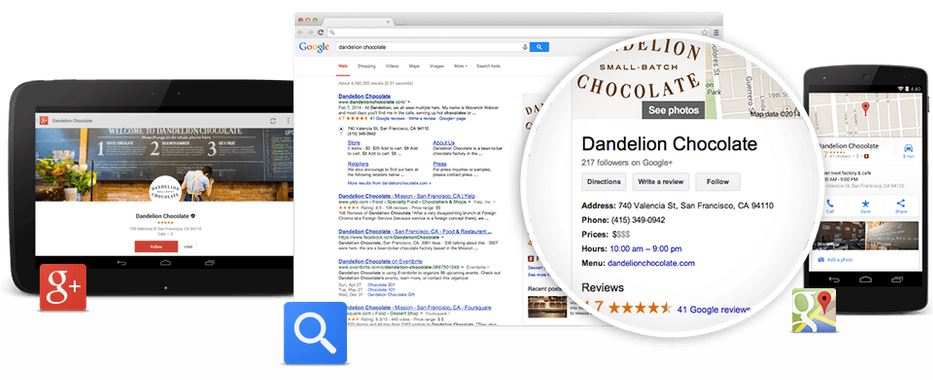
Have you ever stumbled upon a store you never even knew existed? I have. After residing in my city for several months, I recently discovered a close health/grocery food/vitamin haven, which would have made my life so much easier if I knew of its existence. Because they had no online presence whatsoever, they lost a good six months of my business. Since an online search for nearby stores brought up nothing in my area, that business showed up lost on my radar.
Your brick and mortar store is no longer the only part of your business you need to tend to. There are many small business website blunders to avoid when starting out. Although the process can be challenging, here are a few tidbits to keep in mind when taking the plunge into the online world.
1) Avoiding the New Yellow Pages: Google
How easy is it to Google your business? ‘Google My Business’ listings are pretty much the new yellow pages, so every business should be on it, especially the smaller variety. Not only does Google’s presence drastically improve your search rankings and raise the chances of your Google maps location popping up, they also give you the chance to take part in some cost-effective local marketing. Not to mention, the convenient online reviews that can drive in more customers.
This may seem like common knowledge to some, but an estimated 40 percent of businesses have yet to claim a local listing on a search engine. Getting your small business on Google is quick and painless, especially with their new addition to help small businesses. So why not take the opportunity to expand your brand?
2) Leaving Out Vital Information
Background info for your business is essential to differentiate you from the competition. What makes your business stand out? What would make a consumer want to buy from you and not someone else on Amazon or eBay? You can start out with some powerful storytelling to leave your customers wanting more, which can eventually increase sales for your eCommerce store. With the immediacy, everyone expects when searching online, it can be easy for small businesses to get lost in the clutter of products, but adding some pertinent information can help your unique brand stick out more.
Digital storytelling can help you create an even more meaningful relationship with your customers, giving you an advantage to the eCommerce giants out there.

3) Messy Page Navigation & Product Descriptions
You always want your message to be crystal clear, and your page navigation to be seamless and error-free, especially when your customers get to your product pages. Small businesses need to be sure to keep this in mind even more, as the competition continues to rise, and the need for immediacy and results increase.
Your product page should especially be clear and to-the-point, never confusing the message. Having an unclear message throughout your site is one vital small business website mistake to avoid at all costs.
Consider using an expanded navigation bar to separate your pages better, or trying out some different color schemes on certain pages to keep items fresh.
4) Neglecting Reviews
It’s equally as important to implement eCommerce product reviews for your business, as they can give you the opportunity to monitor your products better, expand you audience, boost your SEO efforts and more.
But, reviews on your product pages are not the only thing I’m referring to. As we discussed above, adding Google reviews will only get more people to notice you, and who could resist that? Hootsuite gives the low-down on exactly why Google reviews for your small business are a must-have, plus some helpful tips to get started.
5) Adding Low-Quality Images
Visual content is becoming a necessity for any online business, as videos for one example are expected to become the content choice for marketers. Consumers react to a virtual experience, and if you videos are a challenge to incorporate, make sure your images are of the best possible quality. By using high-quality images, you can boost your website’s conversion rates, leading to the possibility of an overall sales increase.
Since eCommerce small business websites are all about the visuals, it is worth it to look into perfecting your product images for not only your website, but throughout social media and your marketing campaigns as well.
Now that you’re up to speed on what mistakes to avoid for your eCommerce small business website, it may be time to start planning out how to best manage your customer’s experience. With these tips, you can be on your way to reaching your maximum sales potential sooner rather than later.
Managing your orders across multiple sales channels can be a bit overwhelming at times. Don’t let your orders start flooding in before you have a backup plan in action.






